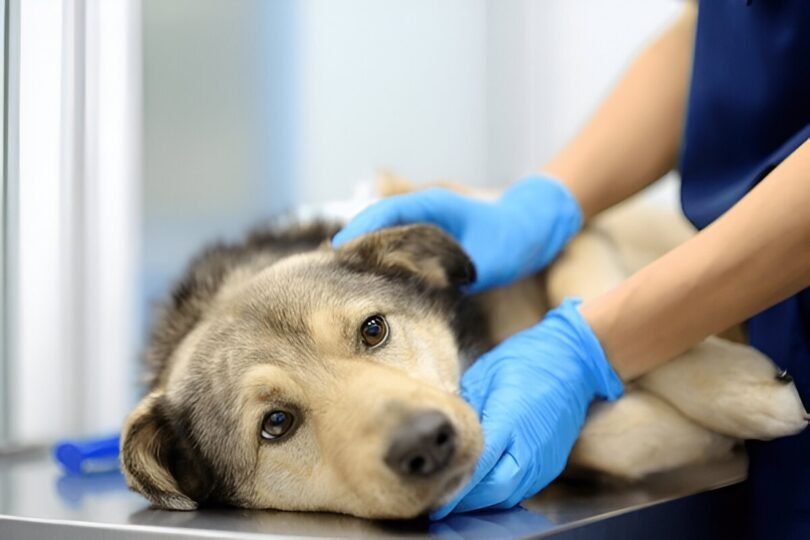If your dog suddenly starts losing balance, tilting their head, or walking in circles, they might be experiencing vestibular disease. This condition affects a dog’s inner ear and brain, leading to issues with coordination and movement. While it can look alarming, many cases are treatable with proper care. Here’s everything you need to know about vestibular disease in dogs.
What Is Vestibular Disease?
The vestibular system controls balance and spatial orientation. It includes parts of the inner ear and brainstem, which help dogs coordinate their movements. Vestibular disease occurs when something disrupts this system, causing dizziness and balance issues.
Types of Vestibular Disease
🩺 Peripheral Vestibular Disease – The most common type, caused by issues in the inner ear (like infections or injuries).
🩺 Central Vestibular Disease – Less common but more serious, linked to problems in the brainstem (such as tumors, inflammation, or strokes).
Symptoms of Vestibular Disease in Dogs
- Head tilt (one of the most recognizable signs)
- Loss of balance or stumbling
- Circling or falling over
- Rapid, uncontrolled eye movements (nystagmus)
- Nausea or vomiting (due to dizziness)
- Loss of appetite (from nausea or difficulty standing)
Symptoms can appear suddenly, making it frightening for pet owners, but many dogs recover with time and supportive care.
Common Causes of Vestibular Disease
🔹 Ear Infections – Bacterial or yeast infections affecting the inner ear.
🔹 Aging (Old Dog Vestibular Syndrome) – A common cause in senior dogs with no known underlying issue.
🔹 Head Trauma – Injury to the head or ear can trigger balance problems.
🔹 Hypothyroidism – Low thyroid hormone levels may contribute to nerve dysfunction.
🔹 Toxins or Medications – Certain drugs or toxins can affect the nervous system.
🔹 Brain Tumors or Inflammation – In rare cases, vestibular disease can signal a more serious neurological problem.
Diagnosing Vestibular Disease
A vet will perform:
🩺 Physical and neurological exams to check coordination and reflexes.
🩺 Ear exams to detect infections or abnormalities.
🩺 Blood tests to rule out thyroid issues or infections.
🩺 MRI or CT scans in severe cases to check for brain conditions.
Treatment Options for Vestibular Disease
💊 Treat the Underlying Cause – If an infection, hypothyroidism, or toxin exposure is responsible, treating that condition may resolve the symptoms.
💊 Supportive Care – Since dizziness and nausea can be distressing, vets may prescribe anti-nausea medication or sedatives.
💊 Hydration & Nutrition – Some dogs struggle to eat or drink; in severe cases, IV fluids may be necessary.
💊 Physical Support – Use non-slip mats, ramps, and padded bedding to help your dog move safely.
For Old Dog Vestibular Syndrome, symptoms often resolve on their own within 1-3 weeks, though some dogs may have a slight permanent head tilt.
When to See a Vet
🚨 If your dog has sudden balance loss, severe vomiting, or abnormal eye movements, seek immediate veterinary care to rule out serious conditions like strokes or brain tumors.
Final Thoughts
Vestibular disease can be scary, but many dogs recover fully with proper care. Whether due to aging, an ear infection, or another cause, early diagnosis and supportive treatment can help your furry friend get back on their feet.








